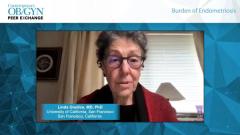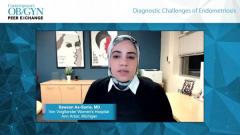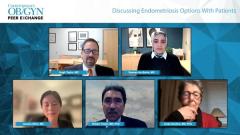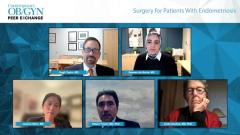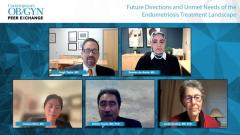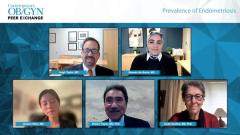
Multidisciplinary Approach to Endometriosis Management
Sawsan As-Sanie, MD, Jessica Shim, MD, Robert Taylor, MD, PhD, and Linda Giudice, MD, PhD, discuss the multidisciplinary approach and shared decision-making strategies associated with endometriosis treatment.
Episodes in this series

Hugh Taylor, MD: Jessica, what’s the role of a multidisciplinary or comprehensive care team in the management of endometriosis? Can gynecologists do it all by themselves?
Jessica Shim, MD: I don’t think so. To Susie’s point, a lot of times patients are coming in with coexisting diseases or other diagnoses. In our clinic, I value my social worker. We have a gynecology social worker, who works with our patients and their families to figure out if the burden at school is a huge thing and what we can do to improve that. Do we need to institute an individualized education plan? Or provide some steps for caregivers and patients so that they’re not falling behind in school? That’s why I absolutely value my social worker and our pain treatment services. A lot of patients have central sensitization, and the pain is being amplified in the periphery. A lot of times patients can also benefit from utilizing the treatment modalities being offered by our pain specialists as well.
Hugh Taylor, MD: It’s important that we involve all the specialists we need—psychologists, psychiatrists, and multidisciplinary teams—to treat this.
Sawsan As-Sanie, MD: I’d like to jump in and say—we haven’t touched on it much—that the group of providers that I probably work with the most closely would be pelvic floor physical therapists. We’re all nodding our heads saying, “Yes, of course.” It is tends to be 1 of the spaces where we spend quite a bit of time talking to patients about their importance, trying to reduce the stigma about referring them to physical therapists with a specialty in pelvic floor issues for patients with pain symptoms. That tends to be incredibly helpful in conjunction with the other treatments that we do.
Robert Taylor, MD, PhD: Right. I’m not aware of the critical evidence base, but I’ve seen pelvic physical therapy [PT] be really successful, whereas acupuncture, TENS [transcutaneous nerve stimulation], and some of the alternative approaches haven’t seemed quite as effective. Susie, you know that literature better than anyone here. Are there other things on the horizon that we should be thinking about other than healthy PT?
Sawsan As-Sanie, MD: That’s a great point. The disconnect between what we know clinically and what’s available in the literature is that pelvic floor PT is quite challenging to study. There are a lot of aspects that are integrated. There’s some cognitive behavioral therapy that happens with PT. There’s a lot of intense treatment. Separating that out is hard to study, but clinically we see it has a tremendous impact.
There are a lot of complementary alternative therapies for pain management. They’re not necessarily specific to endometriosis, but they can benefit some patients with endometriosis, like acupuncture and acupressure. TENS is something that lots of our [physical therapists] will show patients how to use. The effect sizes are probably going to be a little more modest, meaning the benefit is incremental. But the other side is that the risk is extremely low. When you’re doing it on top of some of the other treatments, especially in patients for whom other treatments haven’t been helpful enough, it’s worth looking into. From a pain-management point of view, this is an area that’s on the horizon, but it’s too early to use in a clinical care model. In research, the evaluation of neuromodulation and mechanisms to affect central sensitization through those techniques, is something people are very interested in.
Hugh Taylor, MD: It does take a team of experts to properly take care of patients with endometriosis. We need everybody to recognize it sooner. You need shared decision-making with your patients to have them involved in sorting out the best treatment for them. And then you need that multidisciplinary team. I’d like to end this session by pointing out that many of our national guidelines have been changing to reflect exactly what we’ve been saying: earlier recognition, clinical diagnosis, and empiric treatment. The latest European Society of Human Reproduction and Embryology Guidelines suggest we can make the diagnosis and try to avoid laparoscopy when possible and get right to treating these patients, so we can start treatment earlier and avoid years of pain and progression of the disease.
TRANSCRIPT EDITED FOR CLARITY
Newsletter
Get the latest clinical updates, case studies, and expert commentary in obstetric and gynecologic care. Sign up now to stay informed.



